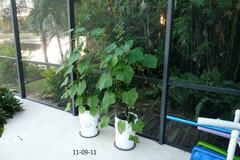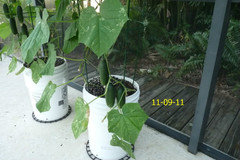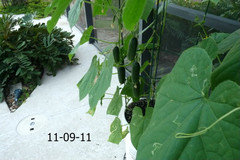Pickleworm eggs. Sigh.
albaby
12 years ago
Featured Answer
Comments (13)
carolb_w_fl_coastal_9b
12 years agoRelated Professionals
Piqua Landscape Architects & Landscape Designers · Euclid Landscape Contractors · Kettering Landscape Contractors · La Mirada Landscape Contractors · Plantation Landscape Contractors · River Ridge Landscape Contractors · San Benito Landscape Contractors · Shenandoah Landscape Contractors · Benton Decks, Patios & Outdoor Enclosures · Inwood Decks, Patios & Outdoor Enclosures · Mebane Decks, Patios & Outdoor Enclosures · Oswego Decks, Patios & Outdoor Enclosures · Hamden Siding & Exteriors · Riverside Siding & Exteriors · Wheeling Siding & Exteriorsalbaby
12 years agocarolb_w_fl_coastal_9b
12 years agoalbaby
12 years agotomncath
12 years agotomncath
12 years agoalbaby
12 years agoalbaby
12 years agoamberroses
12 years agoloufloralcityz9
12 years agoCarol love_the_yard (Zone 9A Jacksonville, FL)
12 years agotomncath
12 years ago
Related Stories

TURQUOISERobin's Egg Blue — Oh, What a Hue!
Breathtaking in its brightness or as soft as a sigh, robin's egg blue will make any room in your home soar
Full Story
HOLIDAYS16 Creative Ways to Hide Easter Eggs
Crack of dawn on Sunday not your ideal thinking time? Just follow our creative egg-hiding ideas and pretend Peter Cottontail did the work
Full Story
KITCHEN DESIGNThe Cure for Houzz Envy: Kitchen Touches Anyone Can Do
Take your kitchen up a notch even if it will never reach top-of-the-line, with these cheap and easy decorating ideas
Full Story
MOST POPULARHomeowners Give the Pink Sink Some Love
When it comes to pastel sinks in a vintage bath, some people love ’em and leave ’em. Would you?
Full Story
COLOR12 Tried-and-True Paint Colors for Your Walls
Discover one pro designer's time-tested favorite paint colors for kitchens, baths, bedrooms and more
Full Story
KITCHEN DESIGNCreate Your Own Checklist for a Well-Stocked Kitchen
Personalize the kitchen with your own must-haves from our list of top cooking tools, small appliances, pots, pans and more
Full Story
GARDENING AND LANDSCAPINGChicken Coops That Rule the Roost
These 8 chicken coops designed by Houzz users will have you clucking in admiration — and maybe even planning a henhouse of your own
Full Story
MOST POPULARHouzz TV: Fred MacMurray’s Enduring Farmhouse Retreat
One of the most beloved actors of the 20th century traded fame for farm implements on this California ranch. His daughter shows us around
Full Story
KITCHEN DESIGNHouzz Call: What’s Cooking in Your Kitchen?
Most of us turn to recipes, videos and culinary shows when we cook. Where do you set your cookbook, tablet or TV screen?
Full StorySponsored
Professional Remodelers in Franklin County Specializing Kitchen & Bath
More Discussions













hejerry